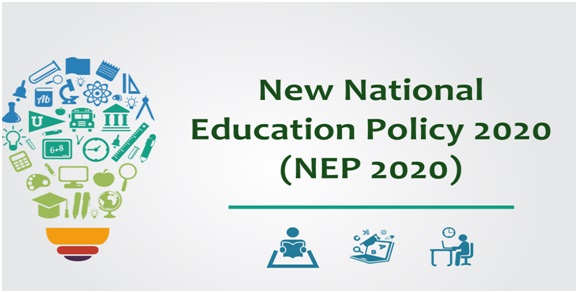Parliament Panel Findings on the New Education Policy, 2020 (The Hindu)

- 27 Sep 2023
Why is it in the News?
The Education Committee of the Parliament has just presented a report about how the National Education Policy (NEP) from 2020 is being put into action in higher education.
Assessment in the report:
- The report checks how well the National Education Policy (NEP) from 2020 is being used in higher education and what progress has been made.
- In India, there are currently 1043 universities.
- Most of them, around 70%, are run by state laws, while about 18% are managed by the Central Government.
- When it comes to students, 94% of them study at state or private institutions, and only 6% are in central institutions.
- The report says that more students are going to college now compared to a few years ago. This is measured using something called Gross Enrollment Ratio (GER), which has gone up from 24.1% in 2016-17 to 27.3% in 2020-21. It's also improved for ST and SC students during this time.
- GER is like a way to see how many students in the right age group (18-23 years) are in higher education compared to the total population.
Report's Status of Implementation:
- Things are going well with the implementation of NEP 2020, thanks to different initiatives like PM Schools for Rising India (PM SHRI), e-VIDHYA, and NIPUN Bharat. The goal is to change higher education to be more inclusive, flexible, and meet global standards.
- Jammu and Kashmir is leading the way by being one of the first places in India to start using NEP 2020 in all Higher Education Institutions starting from 2022.
- NEP 2020 wants students to become more creative and innovative. It encourages connections between colleges and industries and works on joint programs.
- Indian universities will get more freedom to set up campuses in other countries and welcome top 100 universities from around the world to work in India.
- NEP 2020 also allows students more flexibility with something called "Multi Entry and Multiple Exit (MEME)" options, which gives them more choices in their education.
Issues Related to NEP:
- Accessibility: Some students in economically disadvantaged areas can't easily access higher education because of money problems, where they live, and because they might feel like they don't belong due to stereotypes.
- Multiple Entry And Multiple Exit (MEME)System: Even though the MEME system seemed flexible, the report suggests it might not work as well in India as it does in Western countries.
- Language Barrier: Most higher education institutions use English to teach, but not many teach in local languages. This can be a problem for students who are more comfortable in their local language.
- Lack of Funding: India needs to spend more on education. Right now, it's only about 2.9% of the country's total income (GDP), but experts say it should be 6%. This means there's not enough funding for education.
Way Forward
- By 2030, the goal is to have at least one multi-purpose higher education institution in every district in India. And by 2035, they want 50% of students to be in higher education, including vocational training.
- They want to focus more on research and innovation to help India file more patents and improve its global ranking.
- To get more money for education, Higher Education Financing Agency (HEFA) should look for funds from sources other than the government, like private companies, foundations, and international banks.
- They plan to make better use of technology in education. Creating a National Educational Technology Forum (NETF) will help expand digital resources and make India a top place for knowledge.
- They also want to make it easier for students who study different subjects to get credit for their work. This will help them move between schools and colleges more smoothly.
National Education Policy (NEP) 2020:
- The National Education Policy, created in July 2020, shows what India's new education system will look like.
- A group led by Shri K. Kasturirangan made this policy.
- NEP 2020 has five important ideas: making education affordable, easy to access, high-quality, fair for everyone, and making sure everyone is responsible for learning.
- It's like a big plan to change both basic and higher education in India by 2040.
- This is the third big education plan since India became independent. The earlier ones were made in 1968 and 1986.
- The new policy focuses on things like studying different subjects, using technology, writing well, solving problems, thinking logically, and getting experience in different jobs.
